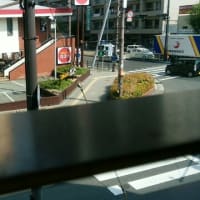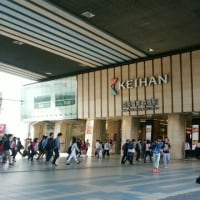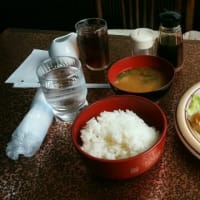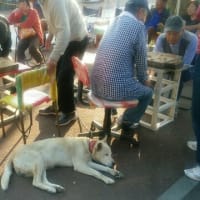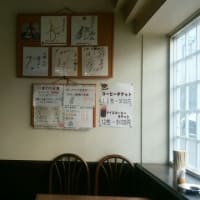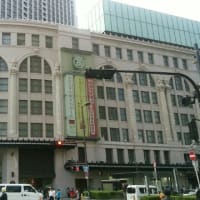
Aftershocks Hit Japan a Day After Quake
By SHIZUO KANBAYASHI
The Associated Press
Monday, March 26, 2007; 12:33 AM
KANAZAWA, Japan -- Aftershocks shook a rural area of coastal central Japan Monday, a day after a powerful earthquake killed at least one person and injured 193 others as it toppled buildings, triggered landslides and generated a small tsunami along the coast.
One of the aftershocks had a preliminary magnitude of 5.3 and struck at 7:19 a.m. Monday. Japan's Meteorological Agency said there was no tsunami danger. The agency warned that strong aftershocks could continue for a week.
"A fairly big aftershock hit just minutes ago and I jumped out the door," said Tomio Maeda, manager of a convenience store in Anamizu town. "It's scary, I guess it's not over yet."
Sunday's magnitude-6.9 quake struck off the north coast of Ishikawa, the Meteorological Agency said. The agency issued a tsunami warning urging people near the sea to move to higher land.
A small tsunami measuring 6 inches hit the shore 36 minutes later, the agency said.
The morning quake toppled buildings, triggered landslides, cut power, interfered with phone service, broke water mains and snarled public transportation. At least one person was killed and 193 others were hurt along the country's Sea of Japan coast, according to the Fire and Disaster Management Agency.
On Monday, officials deemed Japan's new earthquake early alert system a success. The system, which allows for faster warnings of possible tsunamis, is more sensitive than the old one and can detect slight tremors that travel underground ahead of the larger quake.
"Before the new system went into effect, it took about three minutes to get out a tsunami alert. On Sunday, we were able to get the alert out within a minute, so I'd say it was a success," said Meteorological Agency official Yosuke Igarashi.
Television footage of Sunday's quake showed buildings shaking violently for about 30 seconds. Other shots showed collapsed buildings and shops with shattered windows, streets cluttered with roof tiles and roads with cracked pavement.
"We felt violent shaking. My colleagues say the insides of their houses are a mess, with everything smashed on the floor," Wataru Matsumoto, deputy mayor of the town of Anamizu, near the epicenter, told NHK.
Prime Minister Shinzo Abe told a parliamentary upper house committee Monday that the quake also had knocked down at least 68 homes throughout the region and left another 164 partially destroyed.
"The government will make every effort to help the victims of the earthquake so they can resume normal lives," Abe said.
Next >
The Fire and Disaster Management Agency said most of the injuries and damage were concentrated in the city of Wajima, about 193 miles northwest of Tokyo.
Takeshi Hachimine, seismology and tsunami section chief at the Meteorological Agency, said the affected area was not considered earthquake-prone. The last major quake to cause casualties there was in 1933, when three people died.
Thousands of homes were still without water service, but electrical power had been nearly completely restored, media reports said.
Western Japan Railway Co. said it had restored most of its train service around the region. The local airport also resumed operations after it closed to check cracks on its runway.
Japan sits atop four tectonic plates and is one of the world's most earthquake-prone countries. The last major quake to hit the capital, Tokyo, killed some 142,000 people in 1923, and experts say the capital has a 90 percent chance of suffering a major quake in the next 50 years.
In October 2004, a magnitude-6.8 earthquake hit northern Japan, killing 40 people and damaging more than 6,000 homes. It was the deadliest to hit Japan since 1995, when a magnitude-7.2 quake killed 6,433 people in the western city of Kobe.
Powerful quakes in 1703, 1782, 1812 and 1855 also caused vast damage in the capital.
According to the U.S. Geological Survey, the epicenter of Sunday's quake was 225 miles northwest of Tokyo. The USGS measured its magnitude at 6.7.
___
Associated Press writers Hans Greimel, Carl Freire and Mari Yamaguchi contributed to this report.
By SHIZUO KANBAYASHI
The Associated Press
Monday, March 26, 2007; 12:33 AM
KANAZAWA, Japan -- Aftershocks shook a rural area of coastal central Japan Monday, a day after a powerful earthquake killed at least one person and injured 193 others as it toppled buildings, triggered landslides and generated a small tsunami along the coast.
One of the aftershocks had a preliminary magnitude of 5.3 and struck at 7:19 a.m. Monday. Japan's Meteorological Agency said there was no tsunami danger. The agency warned that strong aftershocks could continue for a week.
"A fairly big aftershock hit just minutes ago and I jumped out the door," said Tomio Maeda, manager of a convenience store in Anamizu town. "It's scary, I guess it's not over yet."
Sunday's magnitude-6.9 quake struck off the north coast of Ishikawa, the Meteorological Agency said. The agency issued a tsunami warning urging people near the sea to move to higher land.
A small tsunami measuring 6 inches hit the shore 36 minutes later, the agency said.
The morning quake toppled buildings, triggered landslides, cut power, interfered with phone service, broke water mains and snarled public transportation. At least one person was killed and 193 others were hurt along the country's Sea of Japan coast, according to the Fire and Disaster Management Agency.
On Monday, officials deemed Japan's new earthquake early alert system a success. The system, which allows for faster warnings of possible tsunamis, is more sensitive than the old one and can detect slight tremors that travel underground ahead of the larger quake.
"Before the new system went into effect, it took about three minutes to get out a tsunami alert. On Sunday, we were able to get the alert out within a minute, so I'd say it was a success," said Meteorological Agency official Yosuke Igarashi.
Television footage of Sunday's quake showed buildings shaking violently for about 30 seconds. Other shots showed collapsed buildings and shops with shattered windows, streets cluttered with roof tiles and roads with cracked pavement.
"We felt violent shaking. My colleagues say the insides of their houses are a mess, with everything smashed on the floor," Wataru Matsumoto, deputy mayor of the town of Anamizu, near the epicenter, told NHK.
Prime Minister Shinzo Abe told a parliamentary upper house committee Monday that the quake also had knocked down at least 68 homes throughout the region and left another 164 partially destroyed.
"The government will make every effort to help the victims of the earthquake so they can resume normal lives," Abe said.
Next >
The Fire and Disaster Management Agency said most of the injuries and damage were concentrated in the city of Wajima, about 193 miles northwest of Tokyo.
Takeshi Hachimine, seismology and tsunami section chief at the Meteorological Agency, said the affected area was not considered earthquake-prone. The last major quake to cause casualties there was in 1933, when three people died.
Thousands of homes were still without water service, but electrical power had been nearly completely restored, media reports said.
Western Japan Railway Co. said it had restored most of its train service around the region. The local airport also resumed operations after it closed to check cracks on its runway.
Japan sits atop four tectonic plates and is one of the world's most earthquake-prone countries. The last major quake to hit the capital, Tokyo, killed some 142,000 people in 1923, and experts say the capital has a 90 percent chance of suffering a major quake in the next 50 years.
In October 2004, a magnitude-6.8 earthquake hit northern Japan, killing 40 people and damaging more than 6,000 homes. It was the deadliest to hit Japan since 1995, when a magnitude-7.2 quake killed 6,433 people in the western city of Kobe.
Powerful quakes in 1703, 1782, 1812 and 1855 also caused vast damage in the capital.
According to the U.S. Geological Survey, the epicenter of Sunday's quake was 225 miles northwest of Tokyo. The USGS measured its magnitude at 6.7.
___
Associated Press writers Hans Greimel, Carl Freire and Mari Yamaguchi contributed to this report.










